How did the Singapore labour market changed after COVID-19 pandemic?
Let’s uncover some tips for success in Singapore’s ever-evolving labour market!
In this blog article, we’ll reveal significant trends, from gender and age ratios to the rise of digital expertise, based on surveys conducted by the Singapore Ministry of Manpower and local universities targeting recent graduates. Explore talent acquisition, retention, and strategies for digital investment, and discover insights to thrive in Singapore’s dynamic employment landscape.
Attention to the significant increase in female employment and degree holders
The “Labour force in Singapore 2022” report released by Singapore’s Manpower Research and Statistics Department (MRSD) presented an overview of the overall labor market in Singapore and highlighted the long-term trends. In this year’s survey results, conducted two years after the onset of the COVID-19 pandemic, evaluate the recovery of the resident workforce. Amid sustained economic recovery and gradual normalization of business and social activities in a challenging labor market environment, the resident workforce continues to improve, with most indicators related to the workforce returning to or surpassing pre-COVID levels.
Let’s explore changes in gender and age ratios, the growing presence of managerial and professional roles, and improvements in educational levels.
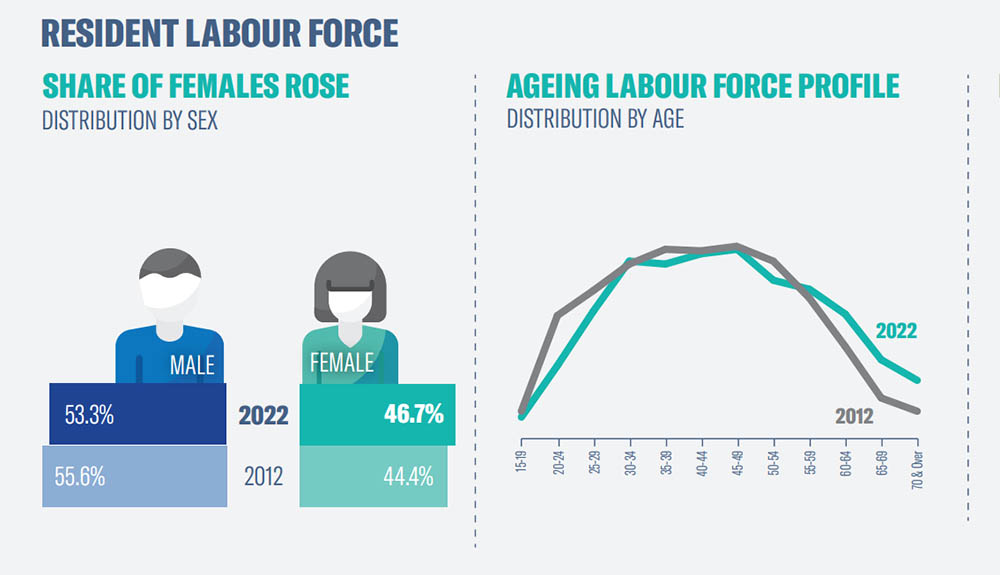
出典:https://stats.mom.gov.sg/Pages/Labour-Force-In-Singapore-2022.aspx
In 2022, there was a shift in the gender composition of the workforce in Singapore, indicating an increase in female participation. The proportion of women rose from 44.4% in 2012 to 46.7% in 2022, reflecting ongoing efforts to promote gender equality and enhance the status of women. Notably, there was a significant increase in the workforce aged 60 and above in 2022 compared to 2012. Conversely, the labor force in their 20s saw a decrease over the past decade.
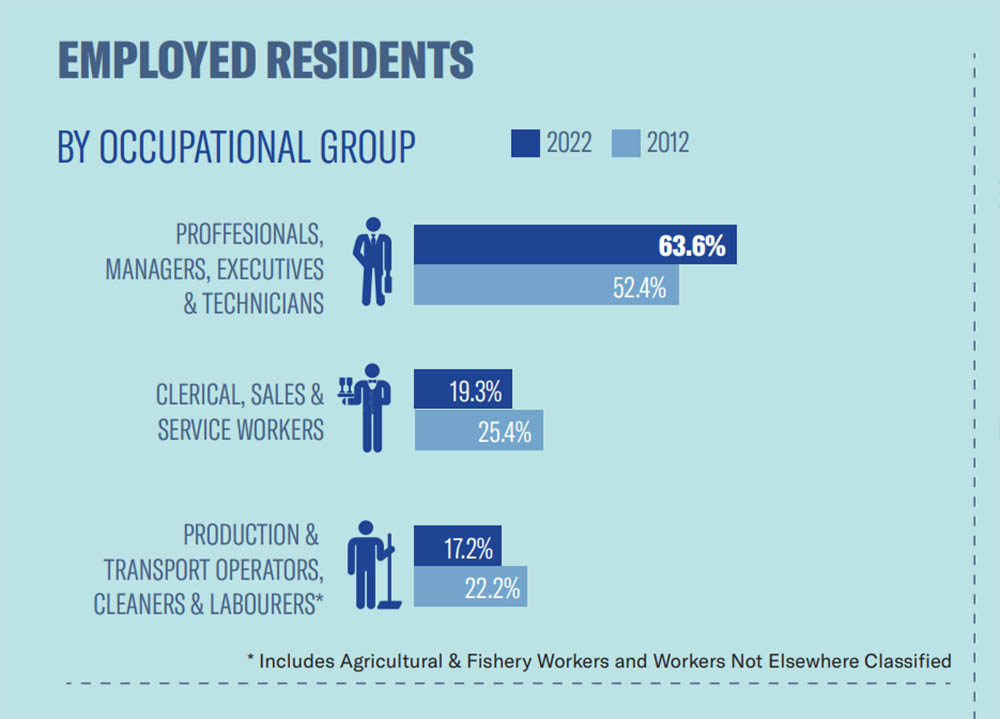
出典:https://stats.mom.gov.sg/Pages/Labour-Force-In-Singapore-2022.aspx
An important trend is the significant growth in managerial and professional positions for local talent. The proportion of Professionals, Managers, Executives, and Technicians (PMETs) increased from 52.4% in 2012 to 63.6% in 2022. This shift signifies the transition to a knowledge-intensive economy and heightened demand for skilled professionals in specialized fields. Conversely, the percentage of clerical, sales, and service positions decreased from 25.4% in 2012 to 19.3% in 2022, reflecting changes in job roles due to technological advancements and automation. Similarly, the proportion of production, transport operators, cleaners, and laborers decreased from 22.2% in 2012 to 17.2% in 2022, indicating a shift towards a more service-oriented and technologically advanced economy.
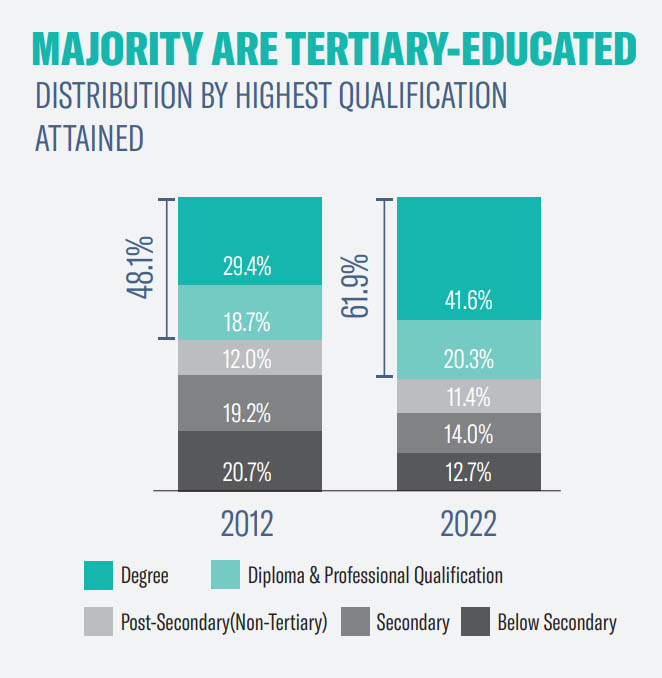
出典:https://stats.mom.gov.sg/Pages/Labour-Force-In-Singapore-2022.aspx
The local workforce in Singapore demonstrated higher levels of educational attainment in 2022. The percentage of the workforce holding degrees, diplomas, or professional qualifications increased from 48.1% in 2012 to 61.9% in 2022. Notably, there was a significant growth in the proportion of individuals with degrees, rising from 29.4% in 2012 to 41.6% in 2022. This trend highlights an increased awareness of the value of higher education and a growing demand in the evolving job market for professionals with advanced skills.
Median total monthly salary for new graduates increase, while individuals possessing digital skills concentrate
Let’s explore the trends in the employment situation for new graduates before and after the COVID-19 period, based on a survey conducted by Singaporean universities (NTU, NUS, SMU, SUSS), and examine the relationship with the impact on Singapore’s labor market.
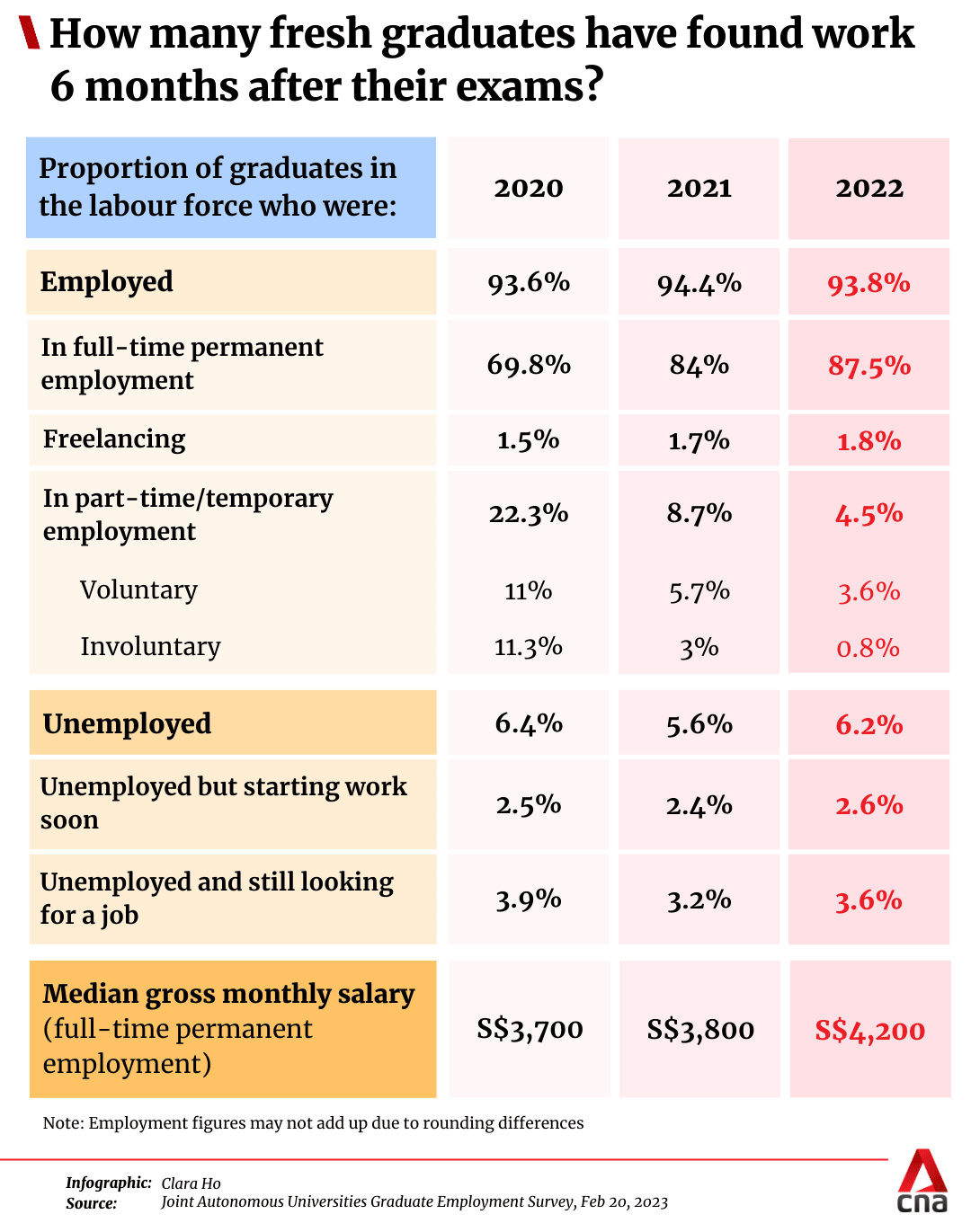
The data reveals changes in the employment situation for new graduates in Singapore. While 93.8% of graduates secured employment within six months after their final exams, this slightly decreased from the previous year’s 94.4%. This decline, the first since 2017, suggests increased competition in the job market and a potential mismatch between the skills of new graduates and the requirements of employers.
Notably, among those employed in 2022, there was a higher percentage (87.5%) securing permanent positions compared to the previous year (84%). Additionally, the proportion of graduates engaging in freelance work increased slightly from 1.7% in 2021 to 1.8% in 2022. However, the percentage of graduates working as part-time or temporary employees significantly decreased from 8.7% in 2021 to 4.5% in 2022. This reflects the growing stability in employment opportunities in Singapore’s economy.
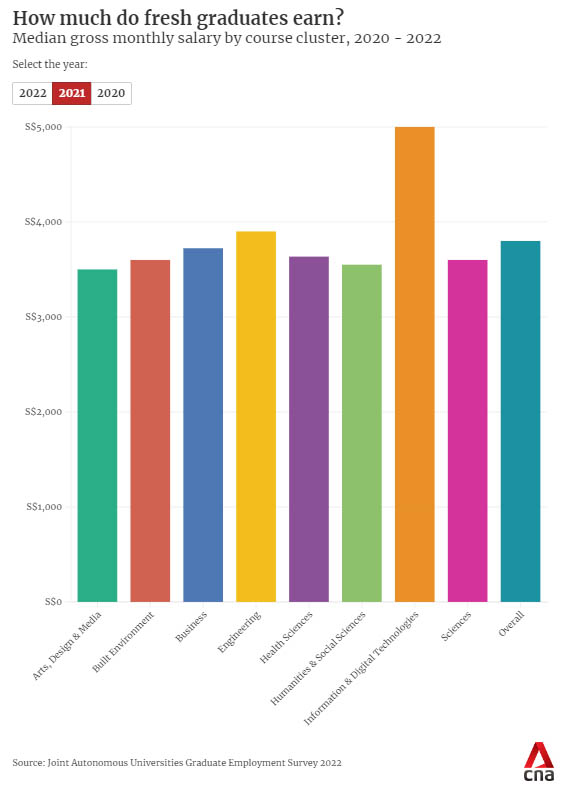
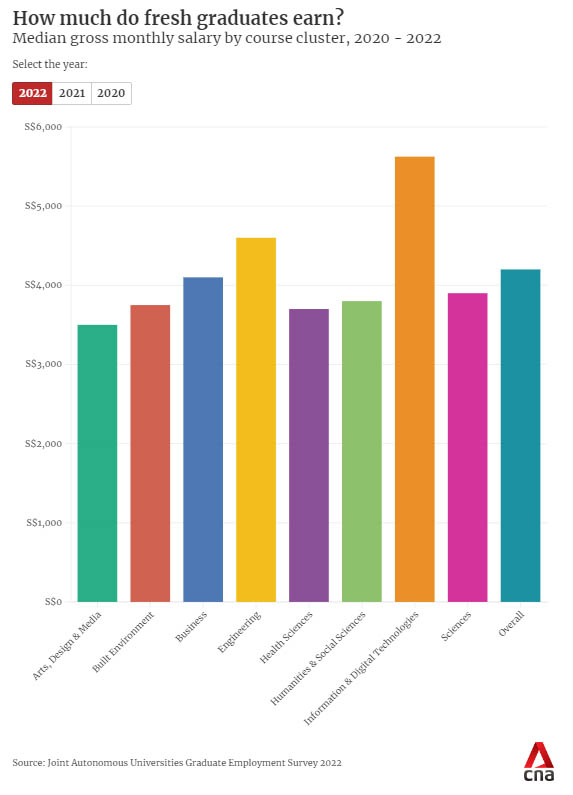
The survey results highlight a significant increase in the median monthly salary for full-time regular employees, particularly in the field of information and digital technology. The overall median salary rose from 3,800 SGD in 2021 to 4,200 SGD in 2022. The most notable increase was observed in the information and digital technology group, where the median monthly salary for full-time employment increased from 5,000 SGD in 2021 to 5,625 SGD in 2022. Respondents from this group, alongside those in health sciences and engineering, boasted the highest proportion of full-time regular employment. While the median monthly salary increased across other groups, the arts, design, and media group maintained a stable income.
The substantial increase in the median salary for technical roles reflects the growing significance of these fields in the Singaporean economy. Increasing demand for digital technology and expertise across various industries suggests that these fields stand out in terms of job opportunities and remuneration.
In conclusion, despite an overall increase in the median salary for graduates, the decline in the employment rate within six months of completing studies indicates a more challenging job market. The growth in the proportion of full-time regular employment and the rise in the median monthly salary for IT-related graduates reflect the increasing demand for digital skills in Singapore’s society. However, the sustained decrease in employment rates for specific occupations highlights the need for ongoing evaluation and adjustments between educational policies and industry requirements. Companies that implement strategies to secure talent, invest in digital skills, and adapt to the evolving Singaporean labor market are likely to succeed.
Please feel free to contact us
MAY Planning provides support related to Singaporean talent. Our services include advice on talent acquisition, support for employee skills training, and a wide range of business solutions.


